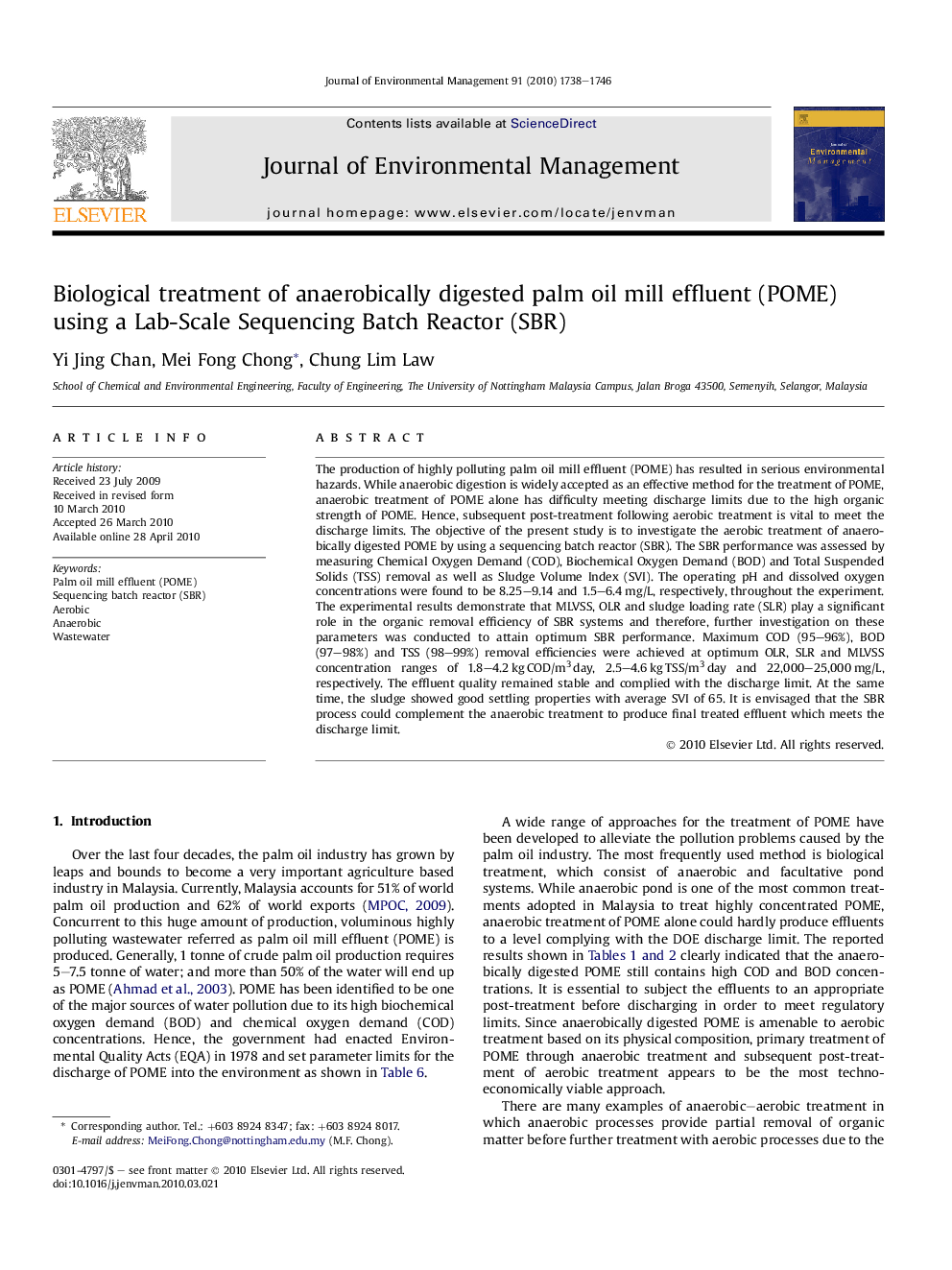| Article ID | Journal | Published Year | Pages | File Type |
|---|---|---|---|---|
| 1057136 | Journal of Environmental Management | 2010 | 9 Pages |
The production of highly polluting palm oil mill effluent (POME) has resulted in serious environmental hazards. While anaerobic digestion is widely accepted as an effective method for the treatment of POME, anaerobic treatment of POME alone has difficulty meeting discharge limits due to the high organic strength of POME. Hence, subsequent post-treatment following aerobic treatment is vital to meet the discharge limits. The objective of the present study is to investigate the aerobic treatment of anaerobically digested POME by using a sequencing batch reactor (SBR). The SBR performance was assessed by measuring Chemical Oxygen Demand (COD), Biochemical Oxygen Demand (BOD) and Total Suspended Solids (TSS) removal as well as Sludge Volume Index (SVI). The operating pH and dissolved oxygen concentrations were found to be 8.25–9.14 and 1.5–6.4 mg/L, respectively, throughout the experiment. The experimental results demonstrate that MLVSS, OLR and sludge loading rate (SLR) play a significant role in the organic removal efficiency of SBR systems and therefore, further investigation on these parameters was conducted to attain optimum SBR performance. Maximum COD (95–96%), BOD (97–98%) and TSS (98–99%) removal efficiencies were achieved at optimum OLR, SLR and MLVSS concentration ranges of 1.8–4.2 kg COD/m3 day, 2.5–4.6 kg TSS/m3 day and 22,000–25,000 mg/L, respectively. The effluent quality remained stable and complied with the discharge limit. At the same time, the sludge showed good settling properties with average SVI of 65. It is envisaged that the SBR process could complement the anaerobic treatment to produce final treated effluent which meets the discharge limit.
